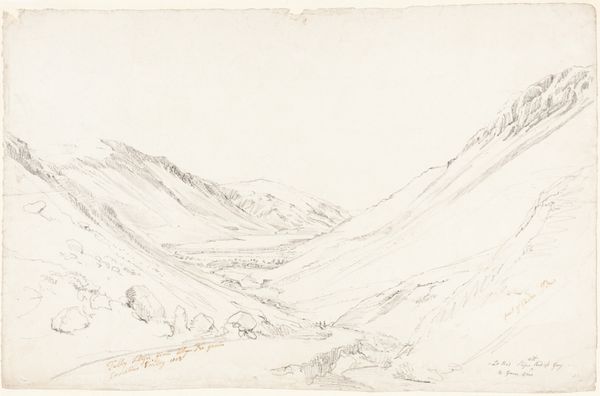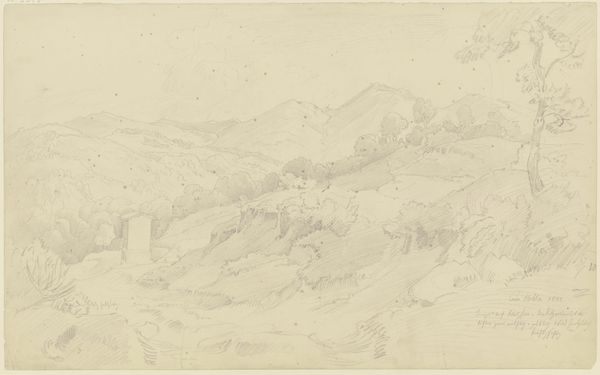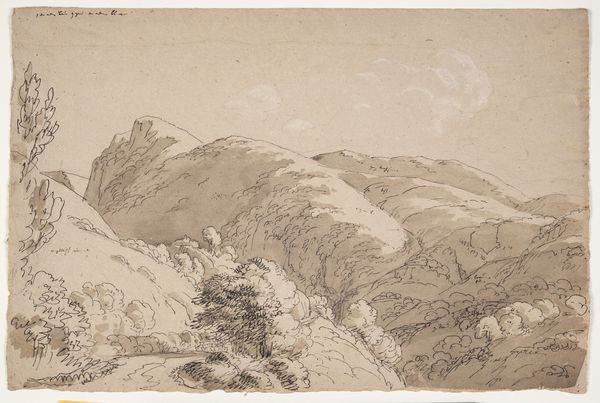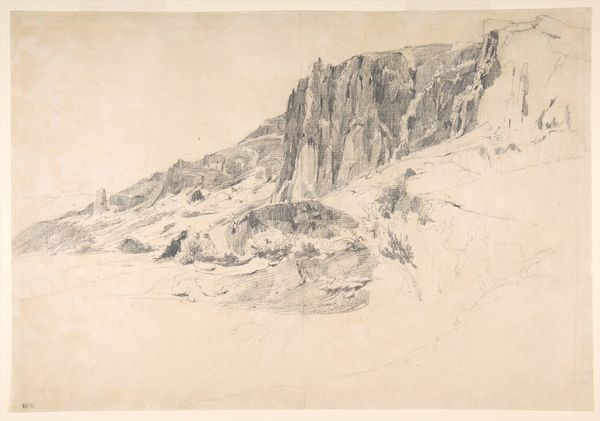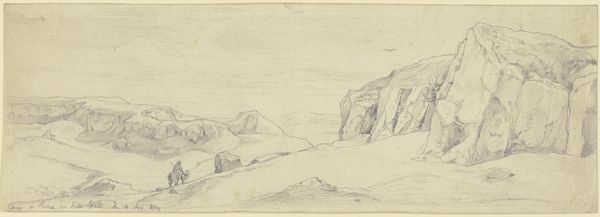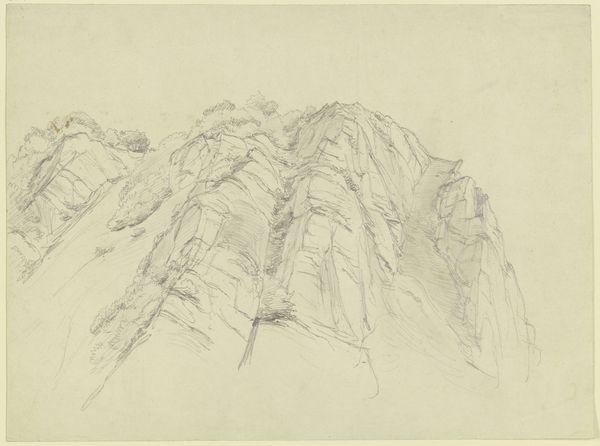
Dimensions: height 97 mm, width 133 mm
Copyright: Rijks Museum: Open Domain
Johannes Tavenraat created this landscape of Tirol using pen in gray and brush in gray and brown. The representation of landscapes became increasingly popular in the 19th century, reflecting a changing relationship between people and their environment. As industrialization transformed urban centers, the countryside emerged as a space of longing, escape, and national identity. The act of sketching en plein air, or outdoors, became integral to the artistic process. It allowed artists like Tavenraat to directly engage with the natural world and capture its fleeting qualities. Tavenraat's choice of the Tyrol region is also significant. This mountainous area, known for its dramatic beauty, was becoming a popular destination for tourists and artists alike. The romantic depiction of nature certainly played a role in shaping perceptions and promoting tourism. By studying travel guides, literature, and other visual representations of the time, we gain a deeper understanding of the cultural values and social meanings embedded within landscape art.
Comments
No comments
Be the first to comment and join the conversation on the ultimate creative platform.
